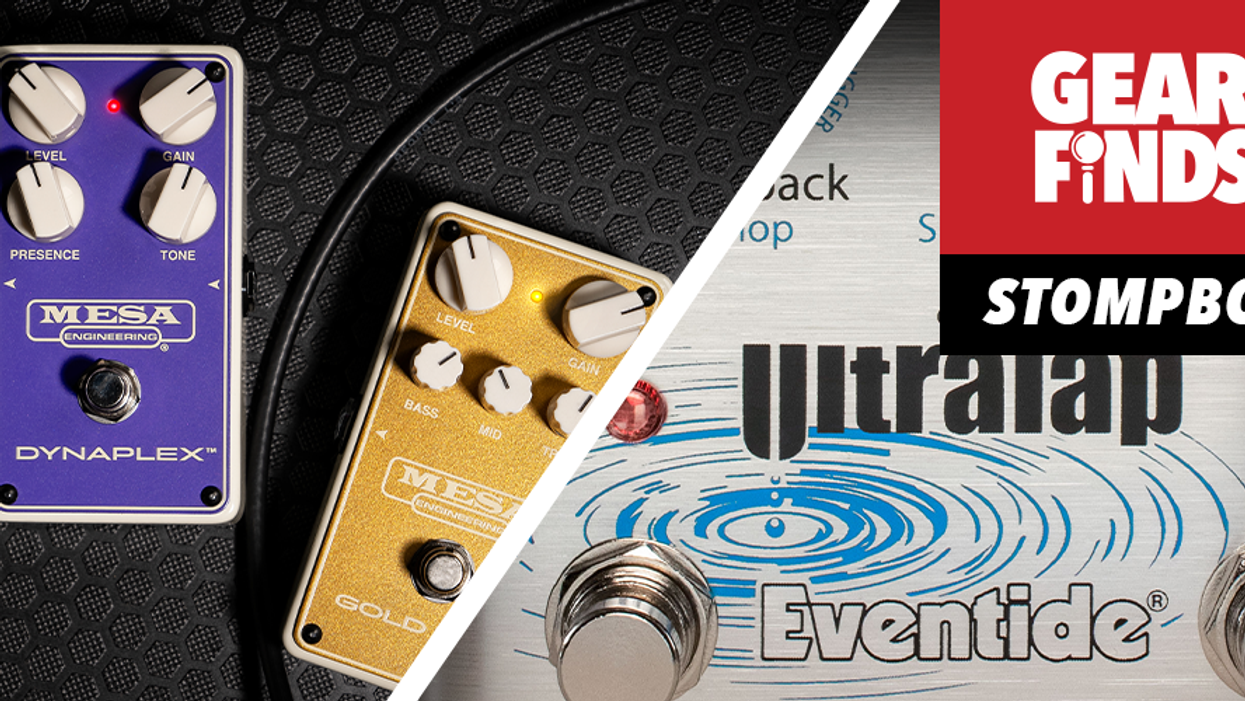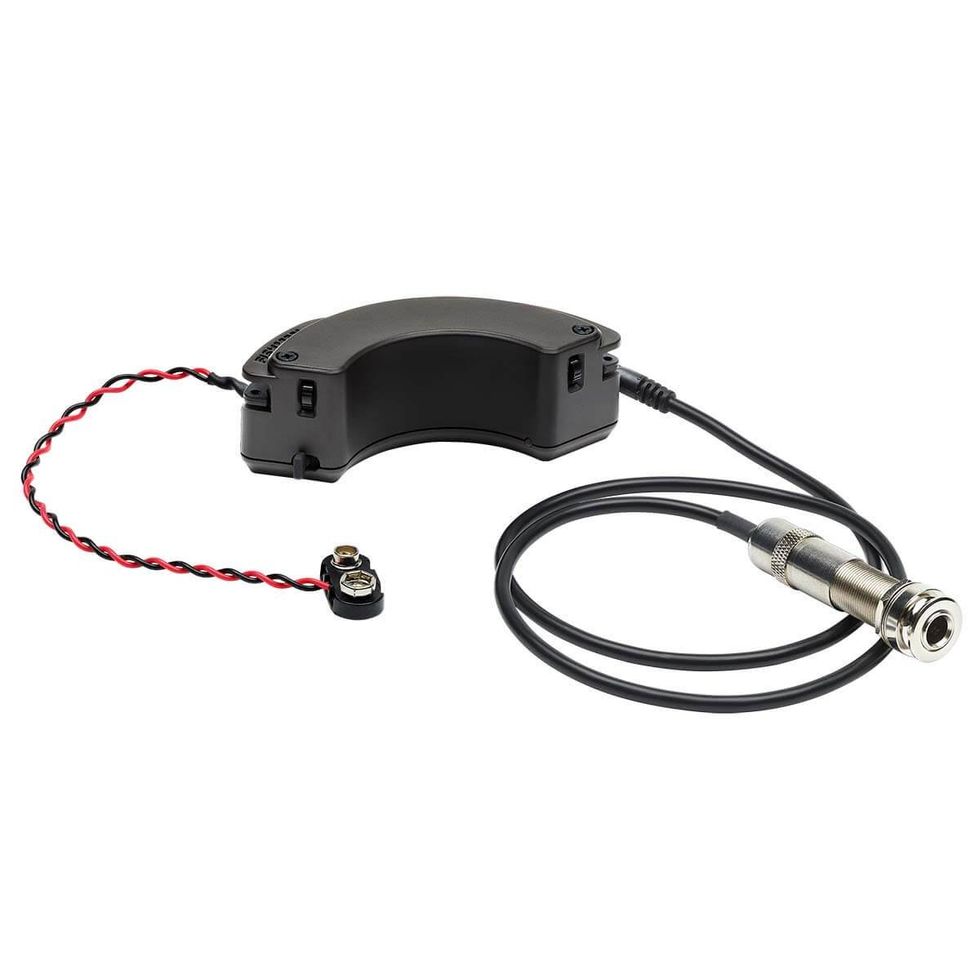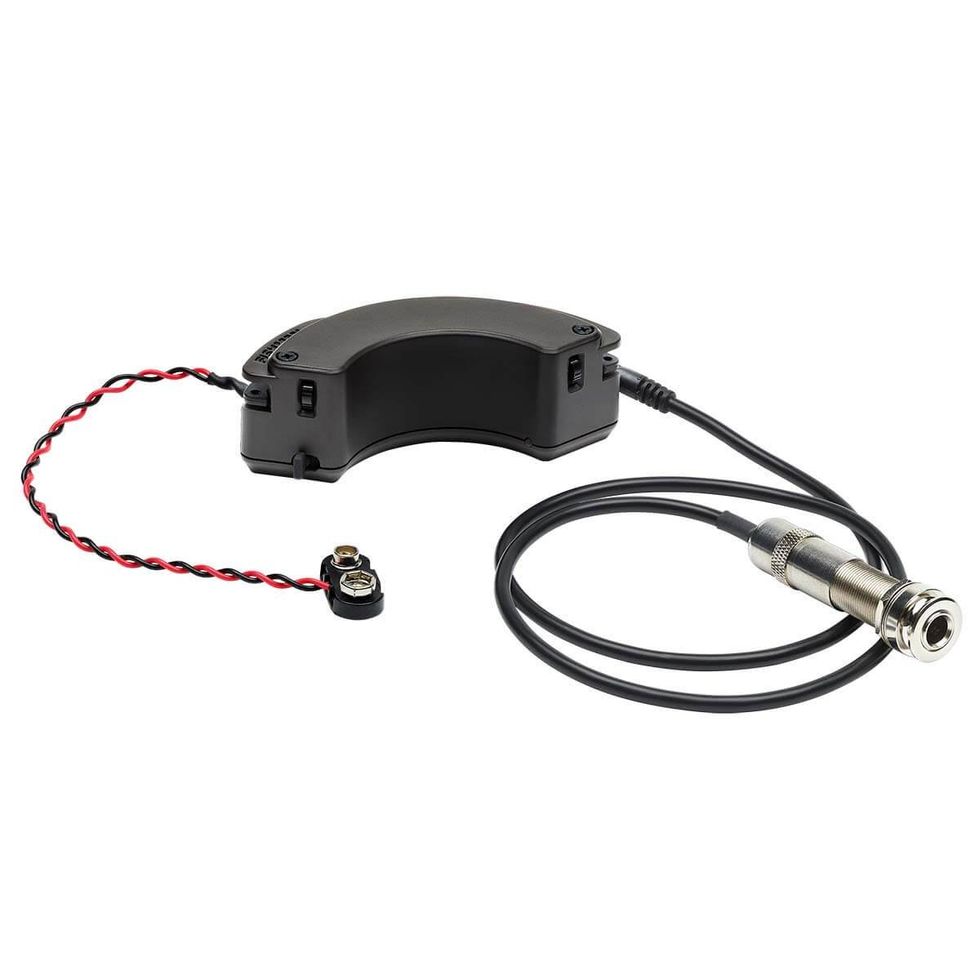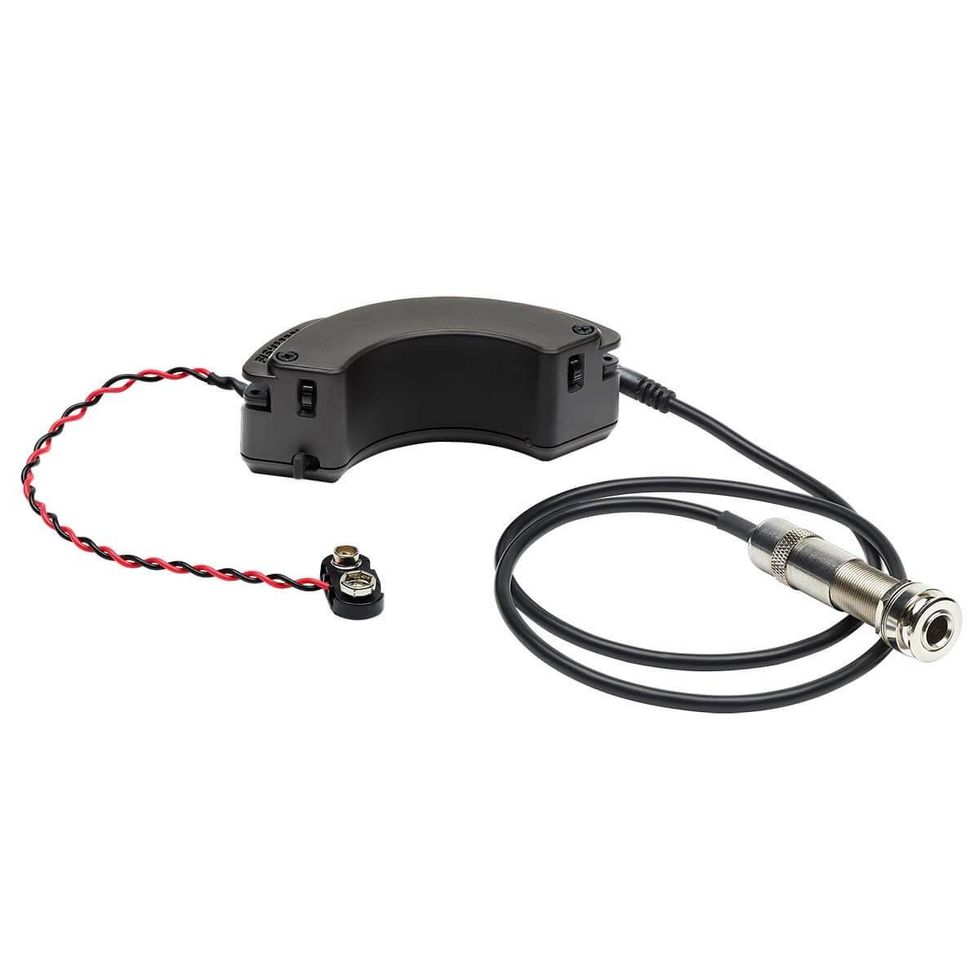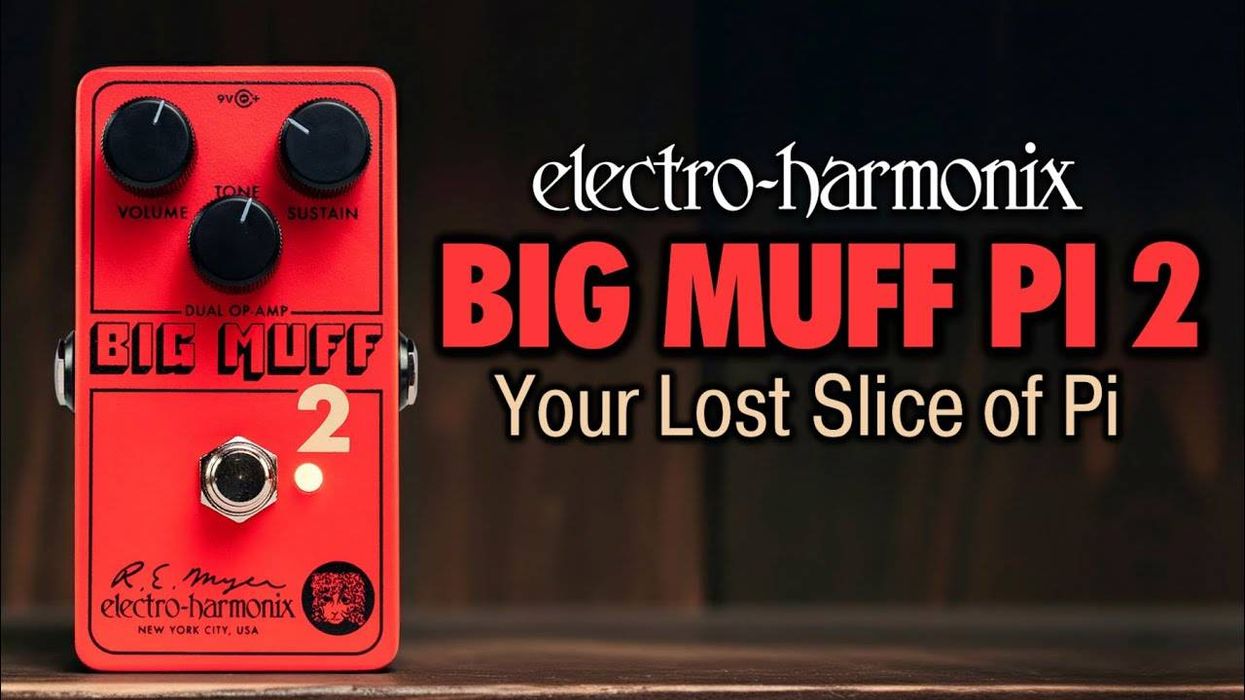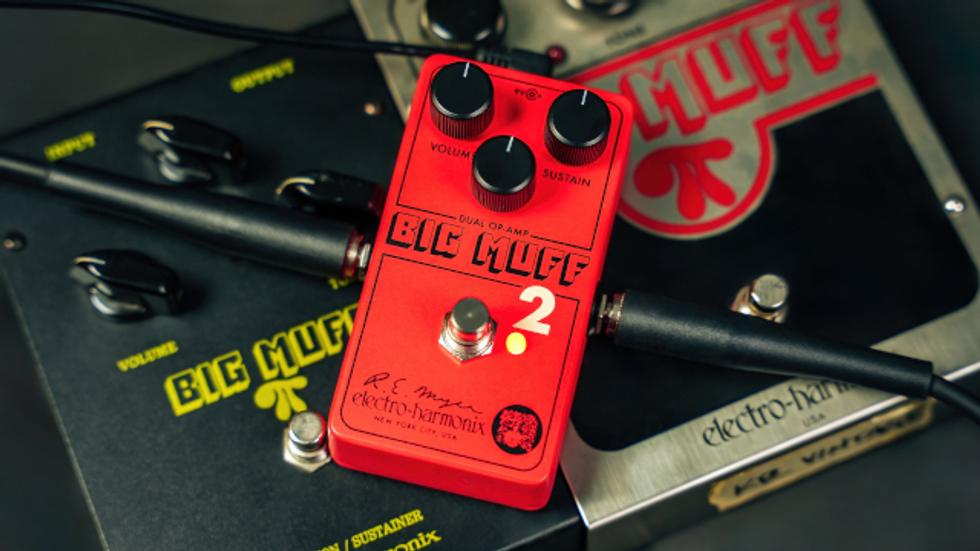I have been gigging out more recently, and I found myself in need of decent acoustic amplification. The good news is that there are more options available to acoustic guitarists than in the past – we no longer have to buy an acoustic/electric and hope it sounds good with our Twin. We can build an entire signal chain that meets the specific needs of acoustic guitars – starting with the pickups.
Because of the resonant nature of the acoustic guitar, designing a pickup that accurately recreates the sound of the instrument and is resistant to feedback has been a challenge for manufacturers. The available pickup products fall into four major categories: piezo (undersaddle), magnetic, mini mic and body sensor. A fifth option is to combine two or more of these.
Piezos
Piezo (short for “piezoelectric”) pickups fit under the bridge saddle. They have a wide, even frequency response, are rugged and low-noise, and don’t exhibit feedback problems at loud stage volumes. They are inexpensive and can be added “aftermarket” to guitars that come without pickups. There are two types: the traditional pressure and vibration-sensitive variety, and, for those using really light strings or low tunings, vibration-only sensing piezos.
Fishman recently introduced a twist in this area by adding modeling to piezos with their Aura Acoustic Imaging products. With this technology, they have physically modeled
the sounds of professionally mic’d acoustic guitars – they can even model your specific guitar. By applying these models to the piezo pickup output, the body resonance and “air” that the undersaddle piezo lacks is added back in. They’re incredibly convincing; you won’t believe you’re hearing your old undersaddle pickup.
Magnetic Pickups
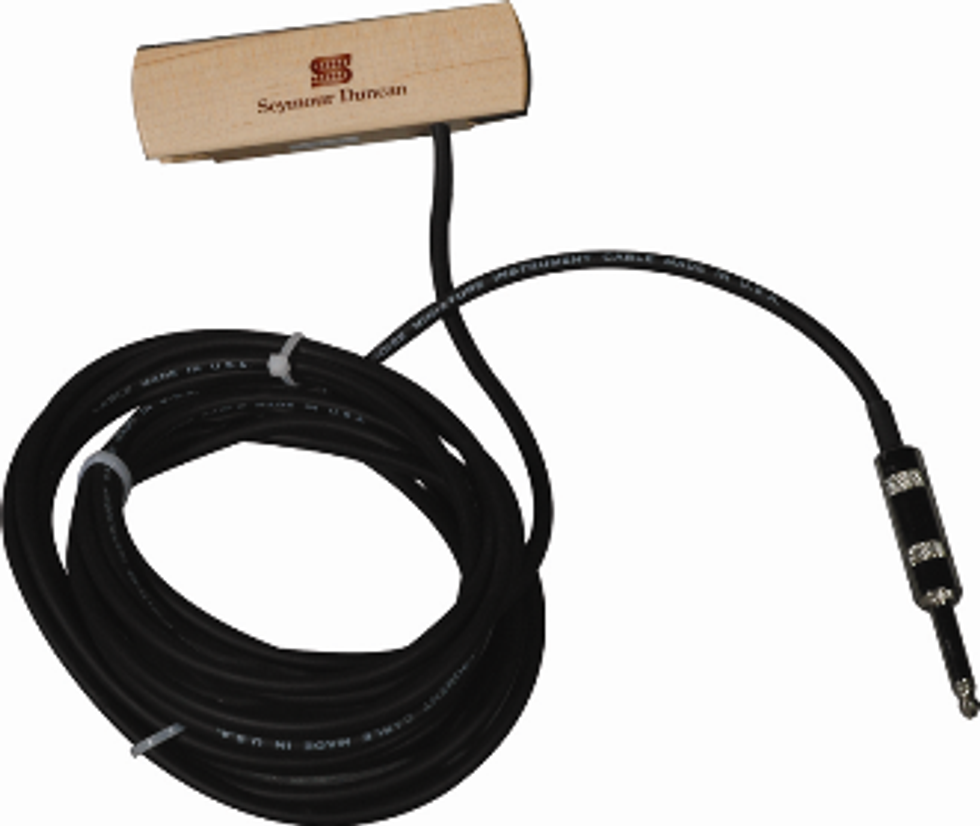 The Seymour Duncan SA-3 “Woody” magnetic soundhole pickup is available in either single-coil or humbucking versions. |
J-160s? Those have a P-90 variant in them. Of course, the technology has improved a great deal since then and several manufacturers, including Dean Markley and Seymour Duncan, have humbucking acoustic guitar designs. The magnetic designs are easy to mount (they typically clip into the soundhole) and take into account body resonances, so gain before feedback is very good.
Internal Mics
Mini microphone technology now allows us to mount an acoustic guitar-specific mic inside our guitars to pick up the natural body resonance and character. Although very natural sounding when set up correctly, these solutions often have feedback problems at high stage volumes. As a result, they are often paired with one of the other solutions discussed here – more on hybrid approaches below. Of course, not just any mic will work – specialized mics that mount inside the guitar, such as the GHS MiniFlex Mics, the Joe Mills internal-mount electret condenser mics (unfortunately not in production as of this writing) or the Highlander Internal Mic, are voiced to provide natural sound quality.
Sensors
Body sensor pickup technologies like the Taylor Expression system can sound truly amazing, although in my experience they are not as feedback resistant as piezo or magnetic pickups. These systems use sensors to detect vibration in different areas of the instrument and then blend them in a preamp that has been voiced to give a natural-sounding result. K&K Sound, Trance Audio and other manufacturers offer transducer systems that can be installed aftermarket – there are even versions
that work with nylon-string instruments.
Hybrid
A solution that’s becoming more and more common is the hybrid approach, which combines two or more of the above technologies. The designer can take the best part of each approach to achieve natural-sounding resonance and feel, while reducing feedback problems. Manufacturers including K&K Sound and Highlander offer hybrid systems that combine an internal mic with an undersaddle pickup or an undersaddle pickup with a magnetic pickup.
Electronics
Piezos, in particular, require a fair amount of preamp gain and EQ to get rid of that spanky, quacky, under-the-string sound – this may mean onboard electronics or an external preamp/EQ unit. Other pickup and mic technologies also benefit from basic built-in EQ controls that allow the player to tweak the guitar tone. You can take that to another level using an outboard EQ for even greater control, paying particular attention to the midrange. Having a sweeping mid control is a plus for getting rid of that annoying nasal quality.
Try a number of guitars with various pickup and mic’ing systems to hear the differences and to find what you like. In many cases, these technologies can be retrofitted to your existing guitar. Whatever method you choose, installing the right pickup system in your guitar is essential for great live acoustic guitar sounds without fear of howling feedback. And don’t forget that an electro/acoustic guitar is useful in the studio as well, as a blended texture with mics or as a fresh tonal voice all
its own.
David Hess
David Hess grew up in a guitar shop. He has been involved in selling, repairing, and collecting guitars and amps since he was 14 years old. For the past ten years he has been a Sales Engineer at Sweetwater. Reach him at (800) 222-4700 ext. 1398 or david_hess@sweetwater.com.


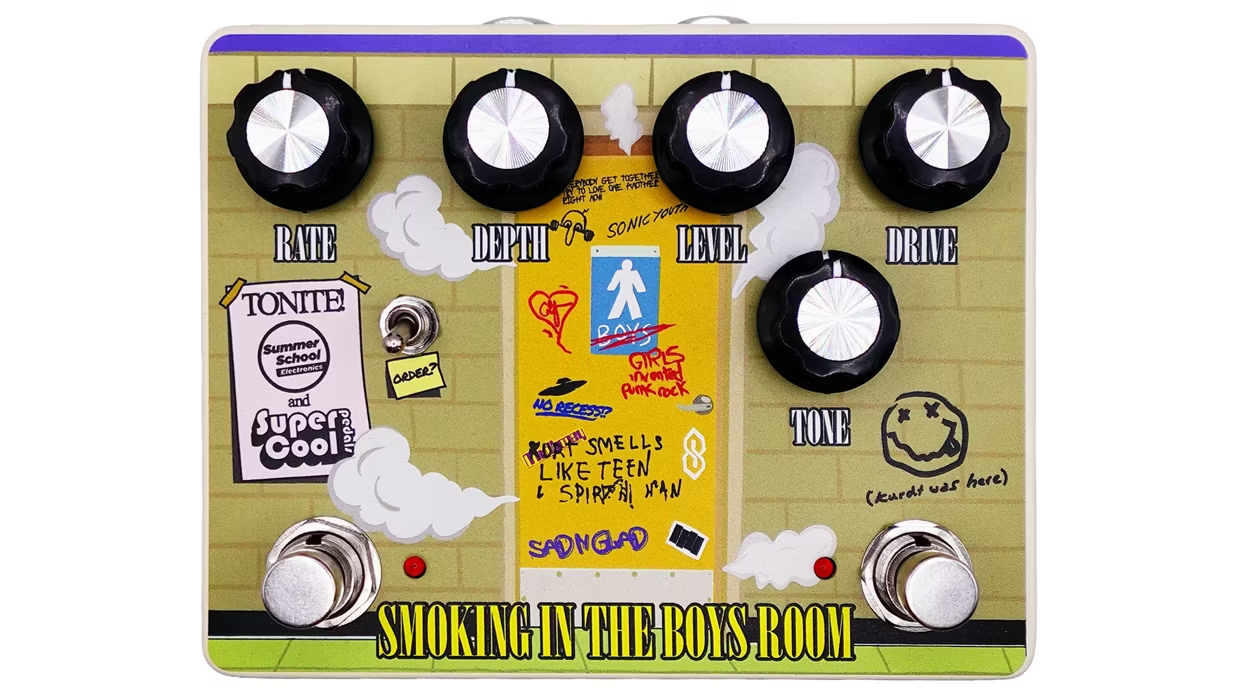






 Bettencourt onstage with the Dark Horse at the Motocultor Festival in Carhaix, France, on August 23, 2005 Sarah "Sartemys" Leclerc
Bettencourt onstage with the Dark Horse at the Motocultor Festival in Carhaix, France, on August 23, 2005 Sarah "Sartemys" Leclerc
![Rig Rundown: Russian Circles’ Mike Sullivan [2025]](https://www.premierguitar.com/media-library/youtube.jpg?id=62303631&width=1245&height=700&quality=70&coordinates=0%2C0%2C0%2C0)


